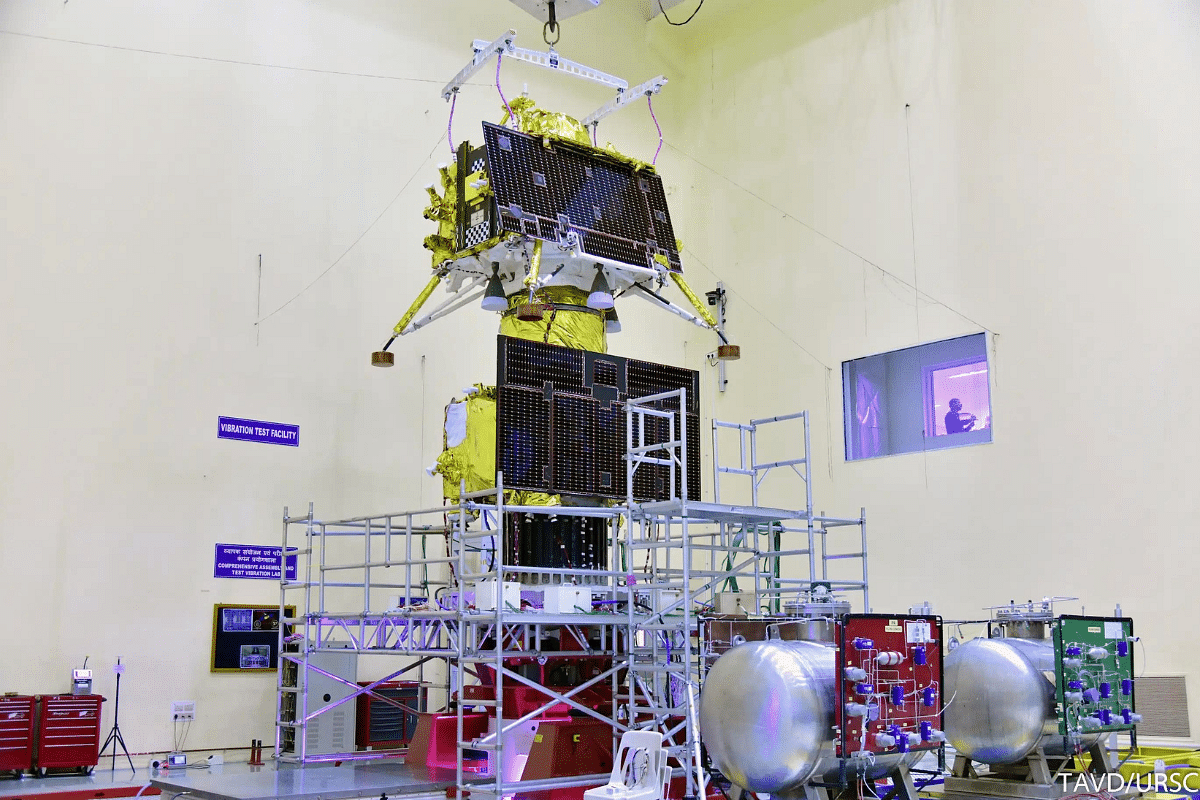Insta
India's Lunar Mission Chandrayaan-3 Set For Launch In Second Week Of July — Report

The Chandrayaan-3 spacecraft has successfully undergone integrated module dynamic tests. (Photo: ISRO)
In under 60 days, the Indian Space Research Organisation (ISRO) hopes to launch the Chandrayaan-3 mission.
The mission aims to successfully land a spacecraft on the Moon's south pole and demonstrate critical technologies along the way.
Chandrayaan-3 will study the Moon's properties, such as thermal, seismic, and plasma characteristics. It will also analyse the elements close to the landing area.
The mission is scheduled for launch in the second week of July, as told to PTI by a senior official of India's national space agency.
ISRO officials have revealed that the scientific instruments on the lander and rover of the lunar mission are aimed towards studying the Moon.
However, an experimental tool will also measure Earth's spectro-polarimetric signatures from lunar orbit, which fulfills the exploratory theme of "Science from the Moon."
The challenges of the tests were increased due to the composite nature of the Chandrayaan-3 spacecraft. It consists of three modules, the propulsion, lander, and rover, and will be launched by the LVM3 (formerly referred to as the GSLV Mk III) from SDSC-SHAR, Sriharikota.
The propulsion module will transport the lander-rover configuration to a 100-km lunar orbit and study Earth using its SHAPE (Spectro-polarimetry of Habitable Planet Earth) payload, which will measure spectral and Polari metrics from afar.
Payloads on the lander include 'Chandra's Surface Thermophysical Experiment' for temperature and thermal conductivity measurement, the 'Instrument for Lunar Seismic Activity' for seismicity measurement, and the 'Langmuir Probe' for plasma density estimation.
NASA's Laser Retroreflector Array on Chandrayaan-3 will be used for lunar laser ranging studies.
The rover will carry 'Alpha Particle X-ray Spectrometer' and 'Laser Induced Breakdown Spectroscopy' to determine the elemental composition near the landing site.
The lander will soft-land (controlled landing) on the Moon and deploy the rover for chemical analysis of the lunar surface.
Introducing ElectionsHQ + 50 Ground Reports Project
The 2024 elections might seem easy to guess, but there are some important questions that shouldn't be missed.
Do freebies still sway voters? Do people prioritise infrastructure when voting? How will Punjab vote?
The answers to these questions provide great insights into where we, as a country, are headed in the years to come.
Swarajya is starting a project with an aim to do 50 solid ground stories and a smart commentary service on WhatsApp, a one-of-a-kind. We'd love your support during this election season.
Click below to contribute.
Latest